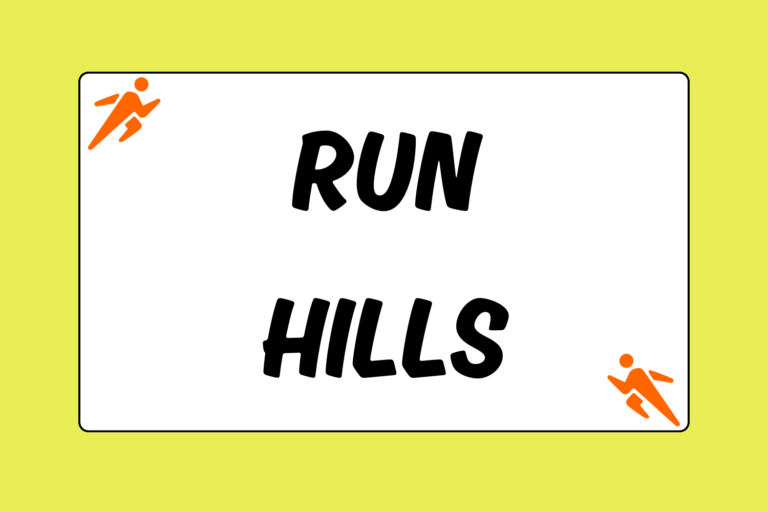There are five distinct sports under the umbrella of competitive distance running: Track and field, cross country, road racing, trail or mountain racing, and ultrarunning. Each abides by its own set of rules and regulations to ensure consistency and legitimacy in the thousands of races that take place around the world each year.
Below is a breakdown of the policies of the four groups. Keep in mind that we highlight only the basic principles and it is always best to check with the sports’ official governing bodies to find more in-depth information.
Guidelines are taken from the International Athletics Association Federation (IAAF), the international governing body of track and field and all competitive running. Any reference to a junior runner indicates an athlete 19 years of age or younger as of December 31, the year of competition. A master is any athlete 35 or older on the day of competition.
Track and Field – Indoor and Outdoor
General Format
Track and field is a series of running, jumping and throwing events that take place over a designated number of days. The specific competitions in the sport are generally referred to as meets, or alternately, track meets. The running competitions are held on a 200- (indoors) or 400-meter (outdoor) rubberized track. Tracks can be shorter or longer in distance, but it makes them ineligible to hold national or international championship meets.
All running events are run in a counter-clockwise direction. All distance events (except the 800m) start on a curved line, so that every runner will have an equal distance from start to finish. The races begin with the shooting of a start gun, after which all runners may leave the start line and move to the inside lane. The 800m usually begins in lanes.
The competitors continue around the track for the designated number of laps. A lap is considered one full circle of the track, during which time the competitors will repeatedly pass the eventual finish line. When the first runner passes the finish line for the penultimate time, a bell will ring to signal the final lap.
The first runner to cross the finish line wins the race.
Distance Events in Track
There are five distance events run in championship outdoor track and field meets: 800m, 1500m, 3,000m steeplechase, 5,000m, and 10,000m. There are four distance events run in championship indoor track and field meets: 800m, mile (or 1500m in some international meets), 3,000m and 5,000m. The start of each event will be marked by a 5cm curved white line.
For more information on the specific number of laps required for each event, please see the sportmentary.com “Running Facilities” guide.
Basic Rules
Competitor Check-In:
All track meets require competitors to report to the clerk prior to their event. This is where runners pick up their numbers and confirm their entry in the race. The specific check-in time is designated by the games committee, but most meets ask that runners check in at least 30 minutes before the event. There are usually three calls – first, second, and final – that will alert the participants at the proper time.
Timing
There are four methods used for timing track races: Hand timing, fully automatic timing, video timing, and transponder timing. Fully automatic timing should be used as often as possible. Time officially starts at the flash/smoke of the pistol or timing device.
Starts/False Starts
In all events, an official is in charge of starting the race (appropriately called “the starter”). The starter must stand in clear view of the athletes as he gives the set commands. The first order in races longer than 400m is “on your marks!” Upon this command, runners must move towards the start line without touching it or the ground in front of it with any part of their body. When all athletes are steady, the gun is fired and the race begins.
Although false starts are rare in distance races, they are not unheard of. One false start is allowed per event without the disqualification of the athlete who committed the infraction. However, the next athlete to move before the gun is fired will be removed from the race.
Lap Counter
There is a designated official, referred to as a lap scorer, who keeps track of the laps remaining in all races longer than 800m. The number will be displayed for the competitors to see at the finish line. The official must change the number as the leader or lead group enters the finish straight.
Cross Country
General Format
Cross country races take place on open courses, over varying distances. The race distance depends on the age, gender, and abilities of the runners, as well as the region in which the competition is held. Courses vary, but all have some combination of grass, hills, mud, water, or even hay bales. These obstacles are meant to test the strength of the runners while still accommodating the typically large number of participants, spectators, and all necessary facilities.
The cross country season begins in the fall and carries into late winter for the national and international championship events.
Distances and Course Specifics
International Championship Events
The standard race distance declared by the International Athletics Association Federation (IAAF) for World Championships and National Championships is 12km for men, 8km for women and junior men, and 6km for junior women.
A loop course, measuring between 1750m and 2000m, is preferred. This means that runners would run multiple times around a course smaller than their final distance to ensure the legitimacy and fan-friendly nature of the route. (For example, if the course is 2000m long, the men would have to complete 5 loops, the women and junior men 4 loops, and the junior women 3 loops.)
NCAA Championship Events
The standard race distance used for cross country in the NCAA is 10k for men and 6k for women. In high school, both girls and boys usually run 5k.
General Rules
Course Markings
A course must be clearly marked from start to finish, using either flags, tape, or a combination of the two.
Start/Finish
All cross country races begin using a mass start, with all competitors side by side in a long, horizontal line. The start line for most races is divided into boxes, with one team assigned to each section. The team will then place their top runners directly on the start line with the remaining team members lined up behind the top runner.
An official will fire a gun to start the race.
The finish is marked with a finish banner and channels runners through a shoot marked with tape or flags. This is done to ensure that the runners’ correct placement is scored.
Scoring
Cross country is a team sport. There are individual awards, but many consider the team championship to be the main objective.
The team score is the sum total of the finishing positions of the top five runners for each team, discounting the placement of individual runners of incomplete or ineligible teams. The team with the lowest number of points wins.
Timing
Championship races must use chip-timing or a system of equal or greater accuracy. Chip timing requires that all runners tie a device (about the size of a nickel or length of a small bracelet) to their shoelaces or ankle, which will automatically track their progress throughout the race.
Smaller races may use other methods to time runners and mark team scores.
Road Racing
General Format
Road racing is a competitive running event that takes place on a measured, paved course. The races range from 5 kilometers (3.1 miles) to full marathons (26.2 miles/42.195km). Unlike track races, road competitions have the added adversity of hills, sharp turns, and mass numbers of competitors, since most races include all skill levels and a wheelchair event. And unlike cross country or trail racing, all competitions must be on a hard, paved surface.
Distances and Course Specifics
The standard distances for IAAF-sanctioned road races are 5km, 10km, 15km, 20km, half-marathon, 25km, 30km, marathon (42.195 km) and the road relay. In the road relay, also referred to as an Ekiden, single gender or co-ed teams of six compete over a marathon distance in stages of 5km, 10km, 5km, 10km, 5km, and 7.195km. One member from each team completes one leg of the race before handing a sash to a teammate who will then race the next stage.
As stated above, all courses must be on paved roads. If traffic or other conditions make that impossible, a bike path or foot path may be used as a substitute. The course may not include grass or other soft surfaces. The race may begin and end on a track in an athletic stadium.
It is advised that IAA-sanctioned races not exceed an elevation gain or loss of more than 1 meter per kilometer over the measured course.
General Rules
Start/Finish
The start of the race must be marked by at least a 5cm-wide white line. The elite, invited athletes stand closest to the line, while the rest of the participants line up behind according to ability and estimated race pace. Larger races usually have officials marking these different pace groups with large signs (for example, a sign saying: 8-MINUTE MILES) to ensure that people running slower will not inhibit the race of the faster runners or vice versa.
There are two start formats allowed in IAAF sanctioned road races:
- Mass Start: In a mass start, all runners (the elite athletes and the thousands of participants behind them) begin at the same time with the firing of a single gun.
- Staggered Start: Because of the immense popularity of the sport, some races have moved to a staggered start to help officials with crowd control and to break up the congestion over the first few miles. Staggered starts can be structured differently from race to race. Usually, either all of the elite runners or just the elite woman begin 5 to 30 minutes before the masses.
The finish line must be a 15cm-wide line in a color that contrasts to the surface of the road. It must be clearly marked with flags or banners.
Aid Stations
There must be water and other replenishments at the start and finish of each race. For all events 10km and under, aid stations must be provided only if necessary due to weather conditions. For all events over 10km, aid stations with water (etc.) must be placed at least every 5km.
Timing
Championship races must use chip/transponder timing or a system of equal or greater accuracy. Chip timing requires that all runners tie a device (about the size of a nickel or length of a small bracelet) to their shoelaces or ankle. This device automatically tracks their progress throughout the race. Mats cued to sync with the chips must be placed at key locations throughout the race to ensure participants do not cut or veer off course.
Trail and Mountain Running
General Format
Trail and mountain running races take place on open courses and involve a large amount of ascent (uphill-specific races), or ascent and descent (standard) over single track, grass, rocky, or off-road terrain. Some mountain running races do occur on paved roads, but have enough of an incline to be considered a part of this category.
For uphill races, the following proportion of incline to overall distance is recommended:
1200m ascent—12km race
800m ascent—8km race
400m ascent—4km race
For races that start and finish at the same elevation, the following proportion of total incline to overall distance is recommended:
750m—12km race
500m—8km race
250m—4km race
International Championship Events
The World Mountain Running Trophy Championships take place every year. The course must follow the ascent-to-distance proportion as enforced by the IAAF. Men run 12k, women and junior men run 8km, and junior women run 4km. Many national qualifying meets do not stick strictly to these guidelines and may run over courses slightly longer, shorter, steeper or flatter than those indicated.
There is also an international championship mountain running series called the World Mountain Running Association Grand Prix. It is an individual-only competition, with a final award given to the athletes (male and female) who acquire the most points by winning or placing high in designated races throughout the season. There are no qualifying standards.
Course Safety
Courses may not have any sections that could be considered dangerous and must be marked from start to finish with flags, fences, paint, or officials, if necessary.
And though many high-caliber mountain races are run on pavement, to be considered for a national or international championship, the course must be less than 20 percent asphalt.
Qualifying
Four women and six men compete, per country, in the WMRT race. In the United States, the USATF Mountain Council chooses two races each year that will serve as qualifying events: One designated the USA Mountain Running Championships and one named the Western Qualifier.
The top three men and top woman at the USA Championship race automatically qualify for the world team, along with the top two men and top two women at the Western Qualifier. The rest of the team is decided by the USATF Mountain Council.
Four junior men and three junior women per country can also compete in the WMRT race and are chosen by the Council based on recent performances at that time. Juniors do not, however, have to compete in the qualifying events to be selected.
Scoring
Mountain running, like cross country, is both an individual and team sport (except in the Grand Prix series). The team score is the sum total of the finishing position of the top four runners on each men’s team, the top three for the women and junior men, and the top two for the junior women. The team with the lowest score wins.
Ultrarunning
General Format
Ultrarunning is the title given to any footrace that exceeds the standard marathon distance of 26.2 miles. The competitions are held on trails, roads, or a combination of the two, and can be measured by distance or by time.
There are many different world and national championship ultrarunning events, including the 100k World Cup, the 24-Hour Challenge, and the World 100-Mile Road Championships. However, one of the most prestigious achievements in the sport is the U.S. Grand Slam of Ultrarunning, where one runner (man or woman) wins all four of the most famous 100-mile races in the United States: The Western States 100, the Leadville 100, the Vermont 100-Mile Endurance Run, and the Wasatch Front 100-Mile Run.
Though there are specific regulation differences between championship and Grand Slam races, most of the rules are very similar. The rules outlined below are for championship events and all races affiliated with the International Association of Ultrarunners (IAU). Most of the guidelines in ultrarunning address the safety and security of race participants.
The IAU is a sub-affiliate of the IAAF and therefore must abide by any of the rules that are applicable to a competition over 26.2 miles.
Assistance and Support
Pacing and Communication
In the championship events, pacing is not allowed. No person or vehicle can aid a runner outside of the designated aid stations. Some of the non-IAAF-affiliated events do allow pacing or help from a runner not intending to complete the race, but the rule varies from race to race.
Radios, cell phones, and electronic devices of that nature are allowed in races over 24 hours, as long as there is no traffic on the course.
Aid Stations
Runners may not accept food, water, sponges (for cooling down), shoe or clothing support, or medical service outside of the designated refreshment zone if they plan on continuing the race.
For any races 24 hours or longer, aid stations must be particularly outfitted with heating facilities, electricity, mattresses, and full cover from the elements.
Course Specifics
IAU-affiliated races must be run on well-kept roads and should be on the flattest route possible. This guideline varies greatly once you step outside the IAU umbrella, as many of the Grand Slams are known for their rough terrain and tens-of-thousands of feet of vertical climbing.
Before race day, the event directors must present all participants with a detailed map that shows a profile of the course route and all places where the elevation exceeds 10m (for loops less than 24 hours) or 25m (larger than 100km).
Night Running
Ultrarunners almost always compete in the dark for some section of the race, since they run anywhere from 6 to 50 hours at a time. For championship events, the race course must be properly illuminated so that a runner can see between 50 and 100m ahead of them, regardless of the time of day.
Not all non-IAU events have this rule. In fact, many of the Grand Slams require runners to have their own light supply on hand for night running.
More Resources:
The above rules are a general summary of track and field, cross country, road racing, trail and mountain running, and ultrarunning. All rules and regulations can vary in detail according to the specific governing body or meet directors in charge of a particular meet. For more detailed rules, try these resources:
IAAF Rule Book
USATF Rule Book
World Mountain Running Association
International Association of Ultrarunners





